Delicious and juicy Lychee or “Litchi” reminds one the arrival of summer. Botanically, this exotic fruit belongs to the family of Sapindaceae and named scientifically as Litchi chinensis.
The L. chinensis is a tropical type fruit tree native to low elevations of the provinces of Kwangtung and Fukien in Southern China. It is a slow-growing medium sized evergreen tree with dense, round-topped foliage, and smooth, gray, brittle trunk and branches. It may reach 40-50 feet height. Litchis, not only eye-catching in spring when the huge sprays of flowers adorn the tree but also is a stunning sight for nature lovers when the tree is full of berries.
The lychee (Litchi chinensis, and also known as the leechi, litchi, laichi, lichu, lizhi) is the sole member of the genus Litchi in the soapberry family, Sapindaceae. It is a tropical and subtropical fruit tree native to southern China and Southeast Asia, and now cultivated in many parts of the world. The fresh fruit has a “delicate, whitish pulp” with a “perfume” flavor. Since this perfumy flavor is lost in canning, the fruit is usually eaten fresh.
An evergreen tree reaching 10–28 meters tall, the lychee bears fleshy fruits that are up to 5 cm (2.0 in) long and 4 cm (1.6 in) wide. The outside of the fruit is covered by a pink-red, roughly textured rind that is inedible but easily removed to expose a layer of sweet, translucent white flesh. Lychees are eaten in many different dessert dishes, and are especially popular in China, throughout Southeast Asia, along with South Asia and India.
The lychee is cultivated in China, Thailand, Vietnam, Japan, Bangladesh and northern India (in particular Bihar, which accounts for 75% of total Indian production). South Africa and the United States (Hawaii and Florida) also have commercial lychee production.
The lychee has a history of cultivation going back as far as 2000 BC according to records in China. Cultivation began in the area of southern China, Malaysia, and Vietnam. Wild trees still grow in parts of southern China and on Hainan Island. There are many stories of the fruit’s use as a delicacy in the Chinese Imperial Court. It was first described and introduced to the west in 1782.
Taxonomy
Litchi chinensis was described and named by French naturalist Pierre Sonnerat in his Voyage aux Indes orientales et à la Chine, fait depuis 1774 jusqu’à 1781 (1782). There are three subspecies, determined by flower arrangement, twig thickness, fruit, and number of stamens.
Litchi chinensis subsp. chinensis is the only commercialized lychee. It grows wild in southern China, Bangladesh northern Vietnam, and Cambodia. It has thin twigs, flowers typically have six stamens, fruit are smooth or with protuberances up to 2 mm.
Litchi chinensis subsp. philippinensis (Radlk.) Leenh. It is common in the wild in Philippines and Papua New Guinea and rarely cultivated. It has thin twigs, six to seven stamens, long oval fruit with spiky protuberances up to 3 mm.
Litchi chinensis subsp. javensis. It is only known in cultivation, in Malaysia and Indonesia. It has thick twigs, flowers with seven to eleven stamens in sessile clusters, smooth fruit with protuberances up to 1 mm.
Description
Litchi chinensis is an evergreen tree that is frequently less than 10 m (33 ft) tall, sometimes reaching more than 15 m (49 ft). The bark is grey-black, the branches a brownish-red. Leaves are 10 to 25 cm (3.9 to 9.8 in) or longer, with leaflets in 2-4 pairs. Litchee have a similar foliage to the Lauraceae family likely due to convergent evolution. They are adapted by developing leaves that repel water, and are called laurophyll or lauroid leaves. Flowers grow on a terminal inflorescence with many panicles on the current season’s growth. The panicles grow in clusters of ten or more, reaching 10 to 40 cm (3.9 to 16 in) or longer, holding hundreds of small white, yellow, or green flowers that are distinctively fragrant.
Fruits mature in 80–112 days, depending on climate, location, and cultivar. Fruits reach up to 5 cm (2.0 in) long and 4 cm (1.6 in) wide, varying in shape from round, to ovoid, to heart-shaped. The thin, tough inedible skin is green when immature, ripening to red or pink-red, and is smooth or covered with small sharp protuberances. The skin turns brown and dry when left out after harvesting. The fleshy, edible portion of the fruit is an aril, surrounding one dark brown inedible seed that is 1 to 3.3 cm (0.39 to 1.3 in) long and .6 to 1.2 cm (0.24 to 0.47 in) wide. Some cultivars produce a high percentage of fruits with shriveled aborted seeds known as ‘chicken tongues’. These fruit typically have a higher price, due to having more edible flesh.
History
Cultivation of lychee began in the region of southern China, Malaysia, and northern Vietnam. Wild trees still grow in rainforest in Guangdong province and on Hainan Island. Unofficial records in China refer to lychee as far back as 2000 BCE.
In the 1st century, fresh lychees were in such demand at the Imperial Court that a special courier service with fast horses would bring the fresh fruit from Guangdong. There was great demand for lychee in the Song Dynasty (960-1279), according to Ts’ai Hsiang, in his Li chi pu (Treatise on Lychees). It was also the favourite fruit of Emperor Li Longji (Xuanzong)’s favoured concubine Yang Yuhuan (Yang Guifei). The emperor had the fruit delivered at great expense to the capital.
The lychee early attracted attention of European travelers. Juan González de Mendoza in his History of the great and mighty kingdom of China (1585; English translation 1588), based on the reports of Spanish friars who had visited China in the 1570s, highly praises the fruit:
They haue a kinde of plummes, that they doo call lechias, that are of an exceeding gallant tast, and neuer hurteth any body, although they shoulde eate a great number of them.
The lychee was scientifically described by Pierre Sonnerat (1748–1814) on a return from his travel to China and Southeast Asia. It was then introduced to the Réunion Island in 1764 by Joseph-François Charpentier de Cossigny de Palma. It was later introduced to Madagascar which has become a major producer.
Cultivation
Growing and Potential Belts
In India, the commercial cultivation was traditionally restricted to the north in the foot hills of Himalayas from Tripura to Jammu & Kashmir and plains of Uttar Pradesh and Madhya Pradesh. However, with growing demand and viability of the crop, commercial cultivation has spread to several other states viz. Bihar, Jharkhand, Madhya Pradesh, Chhattisgarh etc.
Lychees are extensively grown in China, and also elsewhere in Brazil, South-East Asia, Pakistan, Bangladesh, India, southern Japan, and more recently in California, Hawaii, Texas, Florida, the wetter areas of eastern Australia and sub-tropical regions of South Africa, Israel and also in the states of Sinaloa and San Luis Potosí (specifically, in La Huasteca) in Mexico. They require a warm subtropical to tropical climate that is cool but also frost-free or with only very slight winter frosts not below -4°C, and with high summer heat, rainfall, and humidity. Growth is best on well-drained, slightly acidic soils rich in organic matter. A wide range of cultivars is available, with early and late maturing forms suited to warmer and cooler climates respectively. They are also grown as an ornamental tree as well as for their fruit.
Land Preparation
The land is cleared of all vegetation and leveled thoroughly. After this, the land is ploughed with disc plough and then with a harrow. Hot and desiccating winds in summer and cold winds in winter adversely affect the growth of litchi plants. Therefore, for proper establishment of a litchi plantation, a suitable wind break should be planted at the orchard boundary and it should be at right angle to the direction of prevailing winds. Tall growing trees such as mango, jamun, eucalyptus, arjun etc. are suitable for this purpose.
Planting
Air layering is the most common method of propagation. It is usually done in the beginning of monsoon and the air layers can be detached from the mother plant after 60-70 days.
The details of planting operations are given below :
Planting Time – August – September. Planting may be done in spring and early summer if irrigation facility is available
Planting Distance – 10 m (both between the plants and rows). 8 m (when the climate is comparatively dry and the soil is not so fertile). Average no. of plants is 200 per ha.
Size of pits – 1x1x1 m (pits are dug a few weeks prior to planting)
Filling of pits – Pits are left undisturbed initially for a period of 15-20 days. Filled with top soil mixed with manures and fertilizers @ 20-25 kg FYM, 2 kg bonemeal and 300 g muriate of potash per pit. A basket of soil taken from old litchi orchard is added to each pit to ensure mycorrhizal association with litchi roots. Pits are then watered so that the soil settles down.
Planting – Square system of planting is usually followed. A small hole is made at the center of the pit and the desired material is planted. Water is applied immediately after planting.
Training & Pruning
After planting, a certain amount of pruning is often necessary to give proper shape to the litchi plant. Once the desired shape is achieved, no pruning is usually necessary, except the removal of dead or diseased branches and damaged shoots or crossed limbs. At the time of harvesting, the part of the shoot bearing the fruit is removed to promote new growth. If the vegetative growth is too much then both root and shoot pruning needs to be done. But heavy pruning causes profuse vegetative growth, which takes place at the expense of flowering and fruiting. When the trees become too old and produce fruits of small size, heavy pruning is suggested.
According to folklore, a lychee tree that is not producing much fruit can be girdled, leading to more fruit production.
Storage of litchi
Fresh lychee fruits are available in the markets from June to October. The Fruit must be allowed to ripen fully on the tree itself since the ripening process stops soon after harvested. Overly maturity makes them turn dark-brown in appearance and lose their luster and flavor. While harvesting, snip off entire fruit brunch, keeping a short piece of the stem attached.
In the store, choose fruits that feature fresh, without cuts or molds. Litchis have very good shelf life. Fresh fruits can be kept at room temperature for up to five days and can be stored for up five weeks in the refrigerator. They can also be frozen or dried and canned for export purposes.
Uses
Lychees are commonly sold fresh in Asian markets, and in recent years, also widely in supermarkets worldwide. The red rind turns dark brown when the fruit is refrigerated, but the taste is not affected. It is also sold canned year-round. The fruit can be dried with the rind intact, at which point the flesh shrinks and darkens. Dried lychee are often called lychee nuts, though, of course, they are not a real nut.
Health benefits of Lychee
Lychee fruits are low in calories, contains no saturated fats or cholesterol, but rich in dietary fiber, which, can be very important for individuals who are concerned about their excess body weight.
Research studies suggest that oligonol, a low molecular weight polyphenol found abundantly in lychee fruit. Oligonol has been found to have several anti-oxidant, anti-influenza virus actions. In addition, it helps improve blood flow in organs, reduce weight, and protect skin from harmful UV rays.
Litchi, like citrus fruits, is an excellent source of vitamin C; 100 g fresh fruits provide 71.5 mg or 119% of daily-recommended value. Studies suggest that consumption of fruits rich in vitamin C helps body develop resistance against infectious agents and scavenge harmful, pro-inflammatory free radicals.
It is a very good source of B-complex vitamins such as thiamin, niacin, and folates. These vitamins are essential since they function by acting as co-factors to help body metabolize carbohydrates, protein, and fats.
Litchi also contains a very good amount of minerals like potassium and copper. Potassium is an important component of cell and body fluids help control heart rate and blood pressure; thus offers protection against stroke and coronary heart diseases. Copper is required in the production of red blood cells.
Cultivars
There are numerous lychee cultivars, with considerable confusion regarding their naming and identification. The same cultivar grown in different climates can produce very different fruit. Cultivars can also have different synonyms in various parts of the world. Southeast Asian countries, along with Australia, use the original Chinese names for the main cultivars. India grows more than a dozen different cultivars. South Africa grows mainly the ‘Mauritius’ cultivar. Most cultivars grown in the United States were imported from China, except for the ‘Groff’, which was developed in the state of Hawaii.
Different cultivars of lychee are popular in the varying growing regions and countries. In China, popular cultivars include: Sanyuehong, Baitangying, Baila, Shuidong, Feizixiao, Dazou, Heiye, Nuomici, Guiwei, Huaizhi, Lanzhu, and Chenzi. In Vietnam, the most popular cultivars are: Longhnan, Tieuhue, and Xuongcomvang. Floridian production is based on the Hawaiian cultivar Kohala. Australia predominantly grows Kohala, Chompoo, Haew, and Biew Kiew. India grows more than a dozen named cultivars, including Shahi (Highest Pulp %), Dehra Dun, Early Large Red, Kalkattia, Rose Scented.
Nutritional facts
The lychee contains on average a total 72 mg of vitamin C per 100 grams of fruit. On average nine lychee fruits would meet an adult’s daily recommended Vitamin C requirement.
A cup of lychee fruit provides, among other minerals, 14% Daily Value (DV) of copper, 9% DV of phosphorus, and 6% DV of potassium (for a 2000-calorie diet).
Like most plant-based foods, lychees are low in saturated fat and sodium and are cholesterol free. Lychees have moderate amounts of polyphenols, shown in one French study to be higher than several other fruits analyzed. On the phenolic composition, flavan-3-ol monomers and dimers were the major found compounds representing about 87.0% of the phenolic compounds that declined with storage or browning. Cyanidin-3-glucoside was a major anthocyanin and represented 91.9% of anthocyanins. It also declined with storage or browning. Small amounts of malvidin-3-glucoside were also found.
In traditional Chinese medicine, Lychee is known for being a fruit with “hot” properties and excessive consumption of Lychee can, in certain extreme cases, lead to fainting spells or skin rashes.

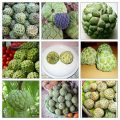
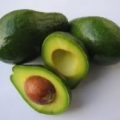

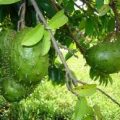
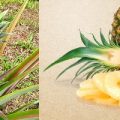
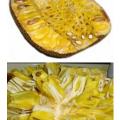

Great article, just what I was looking for Lychee fruit.
I’m satisfied that you shared this useful info with us.
Please stay us up to date like this.
Thank you for sharing.